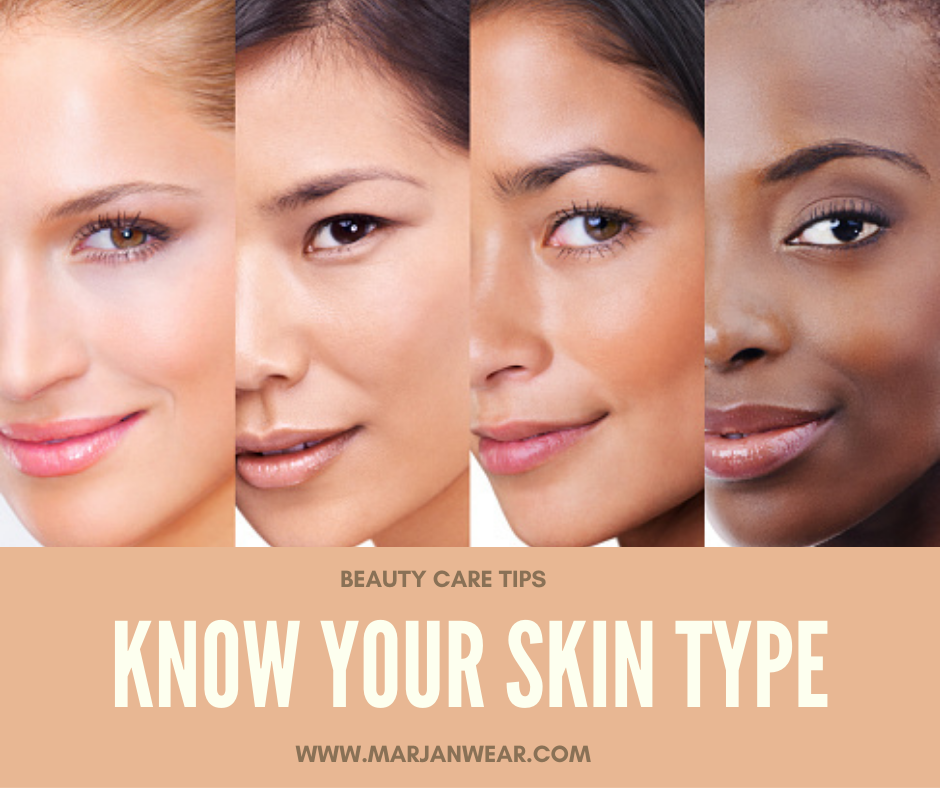Take a Test to Know Your Skin Type: You’ve probably heard about the many skin types: regular, oily, dry, combination, and hypersensitive. Which one do you have, though? It is subject to grow over time. Youngsters, in general, are more likely to have a regular type of skin than adults. We will understand the following points in this post to determine your type of skin.

What’s the difference between dry, oily, and combination skin?
How much water is in your skin, and how much moisture is in your skin impacts its health.
Its softness is influenced by how oily it is.
What is the degree of sensitivity?
DRY SKIN TYPE
Dry skin can feel tight throughout the day and damage easily. Genetics, environmental variables such as lifestyle and diet, hormone fluctuations, and climate all contribute to dry skin. Drinking lots of water and avoiding diuretics like alcohol and coffee can make a big impact on how your skin feels and appears.
SKIN TYPE: COMBINATION
Dryness on the cheeks is common in people with mixed skin, so finding a moisturizing cream that isn’t too heavy but strong enough to maintain moisture where it’s needed most is critical. Combination skin is free of breakouts on the cheeks and has a well-moisturized t-zone. Polishing on a daily basis is also necessary to maintain the t-zone and cheek areas’ equilibrium. Moisturizers with a gel-like texture absorb faster and are less likely to clog pores. To avoid over-moisturizing and straining the skin, start with a modest amount and gradually increase.
OILY SKIN
Excess oil can cause acne and make them look clogged. However, because oily skin has more natural moisture and is less resistant to wrinkles, it seems younger and softer. To stimulate the cell cycle and avoid oil buildup in pores, daily enzymatic exfoliation is required. A light physical cleanser that does not contain abrasives can create tiny holes, can also help to balance your natural skin tone and texture.
PIH (post-inflammatory hyperpigmentation), is a disorder that produces dark spots on the skin after a breakout has recovered, again it is more common in oily skin types. By polishing away the top layers of skin and revealing new cells, exfoliation can also help brighten these dark spots. Under eye brightening cream.
Exfoliators containing anti-bacterial substances should be used by those with moderate to severe acne outbreaks to hasten to heal and prevent recurring pimples.
Related: How to get rid of dark circles?
Follow these 5 steps to know your skin type:
Step 1: In the morning, wash your face with a gentle cleanser of your choice. Make sure you’re using a gentle solution that won’t irritate your skin.
Step 2: Then, with a soft towel, gently wipe your face and leave it open.
Third step: For an hour, don’t use any products on your skin.
Step 4: Take a clean cloth and spread it lightly over your face after an hour. Gently wipe your skin.
Step 5: Consider the characteristics of the cloth in your hands, as well as the quality of your skin.
Results Will Reveal your skin type
Your exposed skin will be oily and shiny. If the color of tissue or any clothing material which you are using changes. This indicates that you have oily skin.
You’ll notice that your skin is tight and dry. It might even feel rough or scratchy. There will be some fine particles on the tissue paper or cloth. This indicates that your skin is dry.
Your T-zone skin will feel oily, your nose will shine, and your cheeks will feel normal or dry. T-zone will reflect on the tissue paper, which will blot with oil in the shape of a T. This indicates that your skin type is a Combination.
